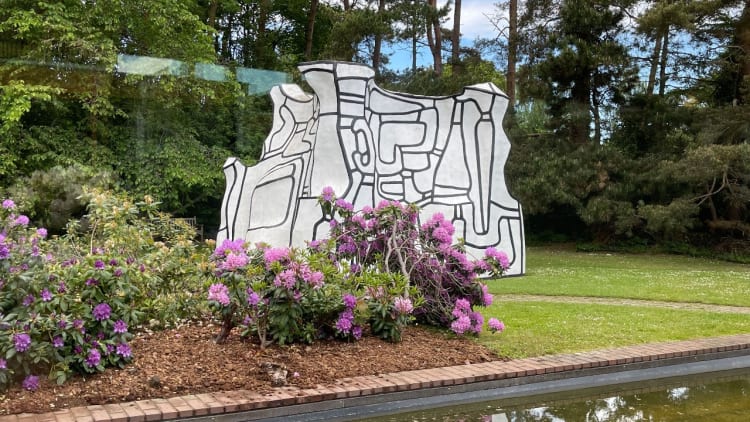Online art is experiencing a spectacular boom and young collectors are at the heart of this revolution. Once reserved for galleries and auctions, the art market is now just a click away.
A new, curious and connected generation is increasingly turning to online art purchases.
But what attracts young people to online art rather than traditional players? This article reveals why the younger generation tends to opt for acquisitions through digital platforms.

1 - Art more accessible than ever
Imagine being able to step into an art gallery from your couch, without having to dedicate your afternoon to visiting physical exhibitions. This is the experience young collectors have thanks to online art sales platforms.
Accessibility is one of the major advantages of this approach: just a few clicks are needed to explore a multitude of artworks from around the world, at any time, and without any pressure.
In 2022, according to a report by Art Basel and UBS, online art sales accounted for 20% of the global market, totaling $10 billion in revenue.
Moreover, 74% of online collectors were under 40 years old, highlighting how the younger generation is driving this shift. The digital world offers unparalleled flexibility and simplicity, making it easier for young people to take the leap into art collecting without the constraints of traditional galleries.
Read also: Are new AI tools threatening the profession of art expert?
2 - Art at your fingertips: when Google replaces the gallerist
Young collectors have a markedly different approach from their elders: they are hyper-connected and self-sufficient.

Before acquiring a piece of art, many of them conduct thorough research. They read articles, watch videos and analyze trends, all from their phones or computers.
This generation doesn’t solely rely on recommendations from galleries or experts but prefers to trust their own judgment, informed by a multitude of online sources.
Clara, 28, shares her experience:
"When I bought my first painting, I researched for several weeks. I read interviews with the artist, compared prices on different platforms, and analyzed their artistic technique before making a decision. It was an enriching experience, without intermediaries or pressure."
According to a 2023 study by Hiscox, 65% of young buyers feel more confident buying art after conducting their online research. The digital world offers them accessible and personalized knowledge, allowing them to better understand the market, artworks, and artists.
3 - Instagram: a global showroom for art
Instagram, once seen as just a social network, has transformed into a true digital art gallery. Today, many young collectors discover new artists through their Instagram feed.
This also allows collectors to directly connect with creators and acquire artworks without intermediaries.
Julie, 32, recounts her first online purchase:
"I discovered an artist on Instagram that I wouldn’t have known otherwise. After a few private message exchanges, I bought one of her paintings. It was simple and fast, and now I follow her work daily."
Social networks are not just communication tools; they have become spaces for discovering and transacting art. Young collectors find daily inspiration there, following their favorite artists, discovering new trends, and even participating in sales launched from the platform.
4 - An infinite artistic diversity
Physical galleries, while valuable for the functioning of the art market, have their limitations. They are often geographically distant and can only display a limited number of artworks.
In contrast, online platforms offer a borderless artistic diversity. Artists of all nationalities, styles, and mediums are now accessible within seconds.

This wide range enables young collectors to discover talents they would never have encountered otherwise. They can explore contemporary, experimental and traditional works from all corners of the globe, broadening their artistic horizons.
The latest Hiscox report highlights that 80% of young online buyers appreciate the diversity of artworks available on the web, which is far more varied than what is found in a traditional gallery.
5 - Art buying: an investment within reach of young people
Online art also allows young collectors to enter the art market at more affordable prices. Unlike the often elitist image of the traditional art market, where prices can be exorbitant, online platforms offer artworks suited to all budgets.
Many digital galleries feature works by young artists at accessible prices, ranging from a few hundred to a few thousand euros/dollars.
Moreover, for young people, buying art is not just a matter of passion but also a strategic investment. Thanks to online price transparency, they can track the evolution of artists's reputations and make informed choices.
Platforms like Artnet or Artprice allow for instant price comparisons and enable investments in works that could increase in value over time.
Léo, 29:
"I started buying art online because it was more affordable. Over time, I realized that some of my acquisitions were increasing in value. It’s a doubly satisfying experience: I enjoy myself while growing my investment."
6 - A more transparent market
One of the major advantages of online art is the transparency of transactions.
Unlike auctions or traditional galleries, where prices can be negotiated privately, digital platforms often display fixed prices or public auctions.

This allows young collectors to know exactly what they are paying for and avoid unpleasant surprises.
According to a recent study by Sotheby's, 58% of young collectors consider price transparency a decisive factor for buying art online.
In conclusion: a new era for young collectors
Young collectors are redefining how art is purchased. More connected, better informed, and eager for discovery, they turn to online platforms that offer accessibility, diversity, and transparency.
Whether through Instagram, specialized platforms or digital auctions, these new collectors are actively participating in a digital revolution in the art world.
Online art is more than just a trend; it is a new way of interacting with art that meets the needs of a curious, mobile and globally minded generation.




